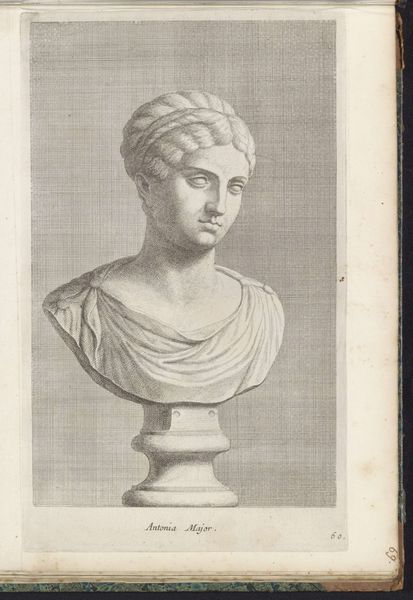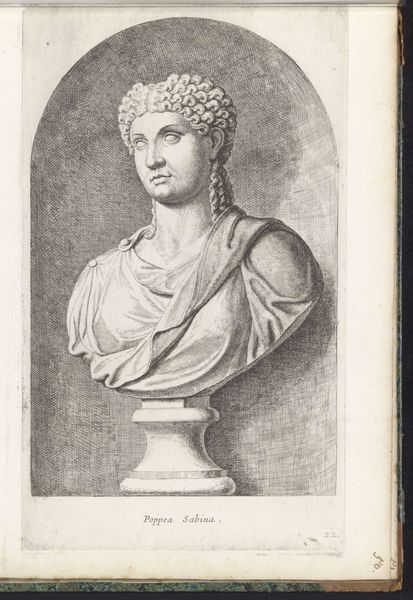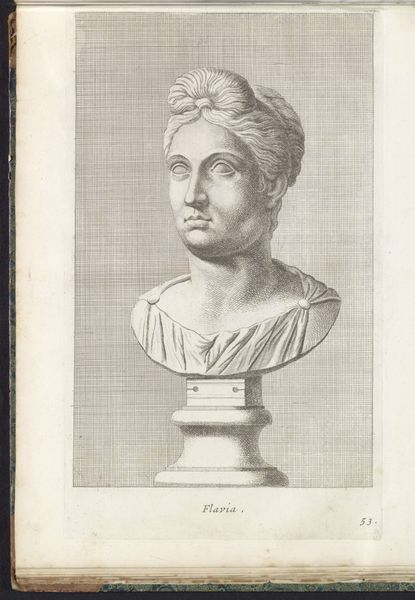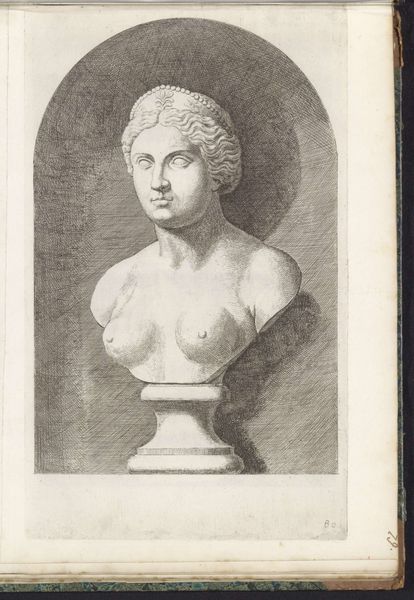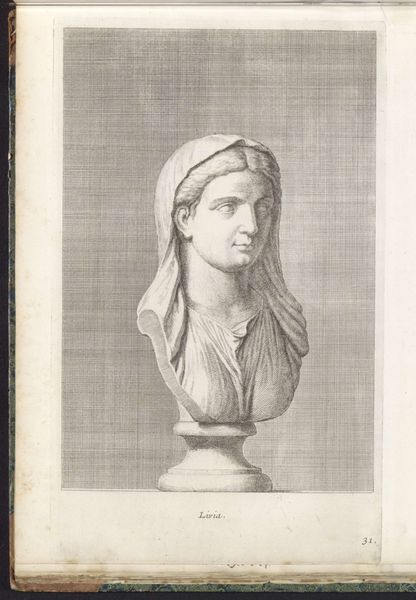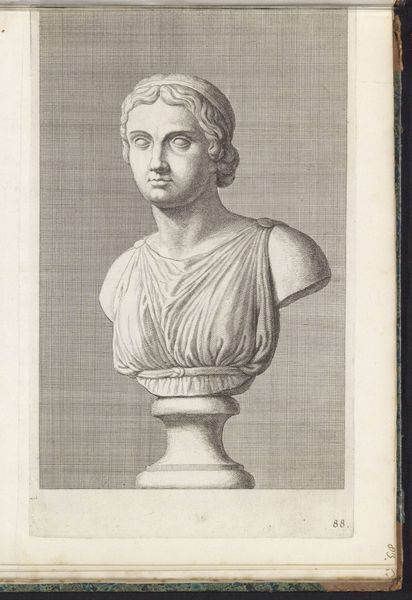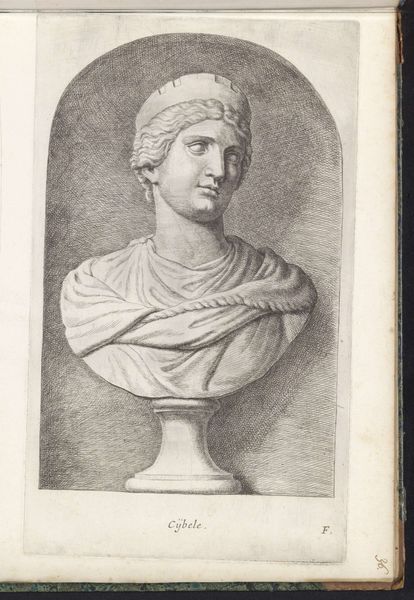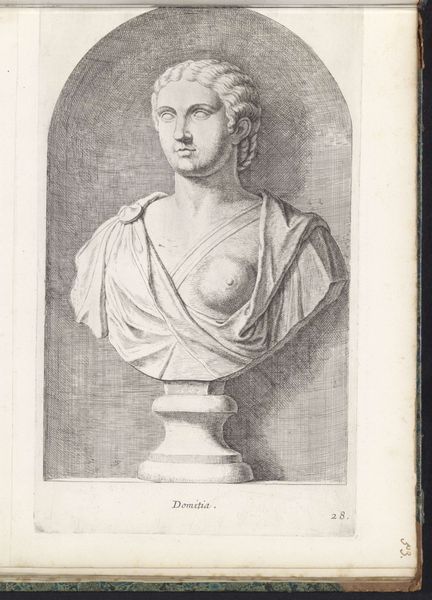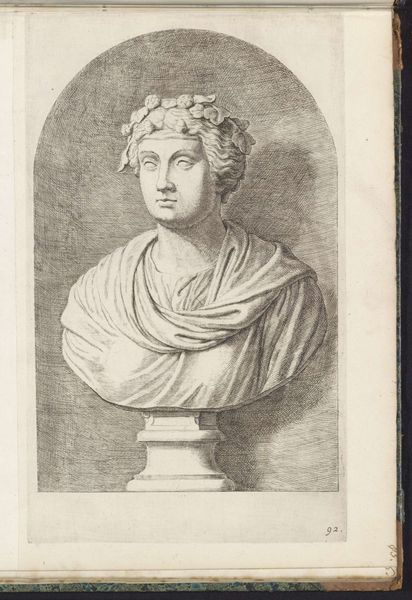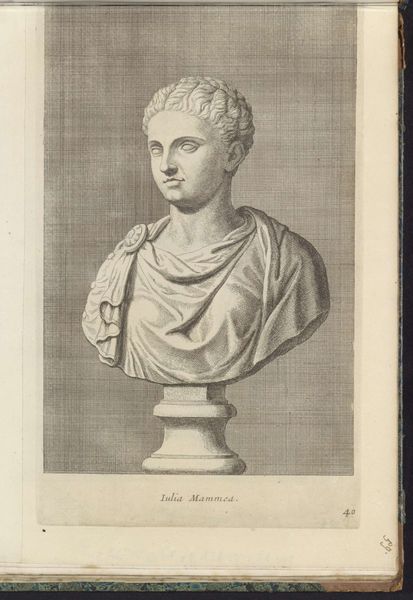
metal, marble, engraving
#
portrait
#
baroque
#
metal
#
greek-and-roman-art
#
classical-realism
#
marble
#
engraving
Dimensions: height 325 mm, width 193 mm
Copyright: Rijks Museum: Open Domain
Curator: What a striking piece. This engraving presents a bust of Octavia, rendered by Hubert Quellinus sometime between 1646 and 1670. It resides here at the Rijksmuseum. Editor: It does command a presence. The austere, almost severe, quality of the figure immediately captures my attention. There is something about the stark whiteness contrasted against the shaded background that gives it a neoclassical appeal. Curator: Indeed. Quellinus was working within the stylistic framework of classical realism, which looked back to Greek and Roman art for inspiration. Observe how the clean lines and simplified forms evoke the timelessness often associated with those ancient sculptures. Editor: Precisely. I wonder, however, about the material realities behind this print. Engraving requires significant labor. The artist’s hand, guided by tools, painstakingly translates form and volume through line and mark. The cultural prestige associated with a sculpture such as this, is transferred through reproduction using techniques from craft production. Curator: A valuable observation! It certainly elevates its symbolic worth as well, doesn't it? Consider how the visual weight rests squarely upon Octavia's features. It gives emphasis to her solemn expression. And, note the symmetrical organization inherent to the overall piece; the balance lends her a sense of poise. Editor: It’s interesting that you point that out. Because for me the drape of her garment seems less about visual balance and more about a representation of texture. How do the etched lines convincingly convey the softness of the fabric contrasting to the implied hardness of the marble or metallic bust? The contrast between tactile impression and cold material presence. Curator: I agree that that duality is striking. Still, focusing on line, shadow, and overall proportion elevates her far beyond mere material representation, would you agree? I see less a study in textures than a quest to capture, through a formal method, a spirit. Editor: Perhaps we meet somewhere in the middle? Quellinus’ work encourages one to consider both aesthetic appreciation and its roots in physical acts, both the creation of an artwork and in turn, our consuming engagement. Curator: Ultimately, that dialectic of form and matter keeps us returning to consider these types of renderings. Editor: A fitting summation to consider.
Comments
No comments
Be the first to comment and join the conversation on the ultimate creative platform.
